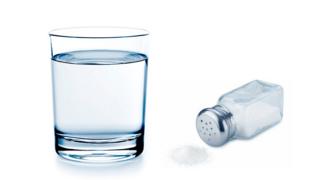 Image copyright Thinkstock
Image copyright Thinkstock
Electricity can be generated naturally when fresh water comes into contact with salt water through a membrane during what is . known as osmosis
the concept is relatively simple: a semipermeable membrane separates two liquids with different concentrations of salt and salt ions pass through the membrane to both concentrations are balanced.
And as an ion is basically An electrically charged atom the movement of ions could be used to generate electricity.
But now researchers Biology Laboratory Nanometer the Ecole Polytechnique Federale de Lausanne , Switzerland (EPFL), have also developed a system for generating osmotic power unprecedented efficiency.
The innovation is based on a membrane just three atoms thick that separates the two fluids and study was published in the journal Nature .
The potential is opened so that the system can be used in the mouths of the rivers of the world, where their fresh water comes into contact with the salinity of the sea to generate a abundant source of energy clean .
the secret lies in the membrane
the system EPFL consists of two compartments filled with liquid are separated by an ultra-thin membrane made of molybdenum disulfide (MoS2) .
The membrane has a tiny hole, or nanopore through which ions from seawater passed to fresh water, until the salt concentrations in the two liquids are equal.
as ions pass through the nanopore, their electrons are transferred to an electrode is used to generate electric current.
Among thinner the membrane occurs more current. And the EPFL has a thickness of three atoms , which is what sets this system.
The material properties of MoS2 are ideal to allow positively charged ions to pass while rejects most negative charge.
that creates voltage between two liquids , as one accumulates positive charge and one negative charge accumulates. This voltage is what causes the flow of current generated by the passage of ions.
“First we had to make and then investigate the optimal size of the nanopore,” said Jiandong Feng, lead author of the research .
“If it was very large, would go negative ions, resulting in a very low voltage. If it was very small, could not get enough ions and the current would be very weak.”
Great potential
According to the calculations of researchers, the potential of the new system is immense .
A membrada of one square meter, with 30% of its surface covered in nanopores should generate 1 megawatt of electricity; enough energy to light 50,000 bulbs modern .
In addition, the MoS2 is easily found in nature or can be created by chemical vapor deposition, so the system could be put into large-scale production.
The challenge is how to make uniform pore sizes . So far, researchers have worked with membranes of a single pore and managed to light a nanotransistor with the energy generated.
The experiment has been ideal for the understanding of the system and the accumulated information will be very useful in the future marketing system, said Jiandong Feng.
research EPFL are part of a growing trend in energy osmotic .
pilot projects has been conducted in Europe, Japan and the United States , although these have involved fragile membranes that generate very low electrical currents.
However, osmosis emerging as a promising and robust source of renewable energy.
While solar panels require adequate sunlight and wind turbines good wind, osmotic energy can be produced at any time, provided there is an estuary near.
No comments:
Post a Comment